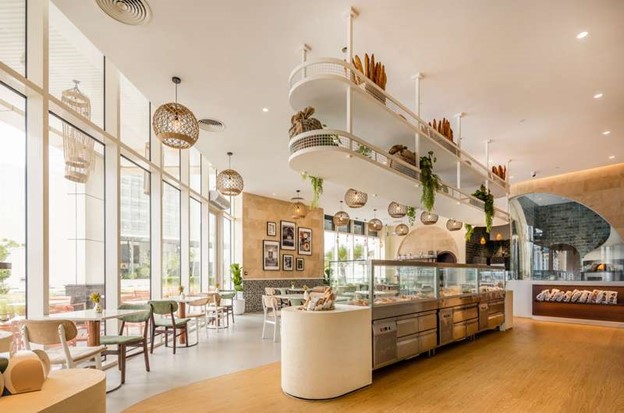Interior design is not just about creating a space that looks good; it’s about moulding environments that feel as good as they look. In the realm of interior design, functionality and style must walk hand in hand, leading to spaces that are not only aesthetically pleasing but also supremely practical. It’s the balancing act that all designers must perform, and when done correctly, it can turn a house into a home, a building into a haven.
The foundation of every great design lies in understanding the canvas—the space—and the individual strokes that the client desires. Each space has its unique purpose, whether it’s a cozy cottage that calls for warm textiles and snug fittings or a sleek office that demands clean lines and an uncluttered approach. To see some inspired examples of such designs, one can explore https://4space.ae/, where the blend of functionality and elegance is evidently a guiding principle.
Understanding the Space and Client’s Needs
The Purpose of the Space
Before the first swatch is selected or the initial sketch drawn, it’s essential to consider the purpose the space will serve. A kitchen, bustling and brimming with activity, will need to accommodate the chaos of culinary adventures. In contrast, a bedroom, a sanctuary of solace, should embrace tranquillity in its design.
Knowing the Client
Equally important is to truly understand the client—through extensive interviews and a good deal of listening. What are their daily habits? Do they lean towards certain colours or textures? How do they envision the space functioning? This deep dive into the client’s lifestyle is as much about psychology as it is about aesthetics.
Principles of Functional Design
Ergonomic Design and Space Planning
Ergonomic design isn’t just for the office; it’s for life. It’s about creating spaces that complement the human form and its movements. Space planning then comes into play, arranging the elements of the space in a way that maximizes both utility and comfort. It is a dance of dimensions, where each piece of furniture and decor is meticulously placed to ensure ease of movement and use.
Accessibility
A truly functional design is accessible to all. It allows for seamless interaction regardless of age, ability, or mobility, ensuring that the space is as inclusive as it is beautiful.
Principles of Stylistic Design
Exploring Design Styles
From the sleek lines of a modern look to the ornate details of a traditional setting, interior design styles are as varied as they are vibrant. Understanding these styles—and more importantly, understanding which elements from these styles resonate with the client—can serve as a roadmap for the design journey.
Timeless Meets Personal Taste
Incorporating personal taste into a design isn’t just about adding a favourite colour or artwork; it’s about weaving the client’s story into the space. This personalization, when blended with timeless design elements, ensures that the style remains relevant and refreshing over the years.
Strategies for Combining Function and Style
Blending the Two Seamlessly
To combine function and style, interior designers often turn to innovative solutions—like multi-functional furniture, clever storage options, and smart technology that makes life easier without compromising on style. It’s about being resourceful and imaginative, finding ways to make style serve a purpose and functionality look attractive.
Material and Furniture Selection
The materials we choose can greatly impact both the functionality and the aesthetic appeal of a space. Durable, easy-to-clean surfaces can look just as chic as more delicate options. Similarly, the selection of furniture must be strategic; pieces that offer storage solutions or that can serve multiple purposes without sacrificing style are gold in the design world.
Common Challenges and Solutions
Navigating Space Limitations
One of the more common constraints in interior design is space—or the lack thereof. Designers must become magicians, creating the illusion of space with clever lighting, mirror placements, and a judicious choice of scale in furniture. It’s about prioritising what’s necessary without compromising on style or function.
Tackling Budget Constraints
Budget limitations can also dictate the extent to which style and functionality can be implemented. However, this doesn’t signal a decrease in quality. Rather, it’s an opportunity to showcase creativity—perhaps through upcycling, selecting cost-effective materials, or finding less-known brands that offer design excellence without the hefty price tag.
Resolving Conflicting Desires
When a client’s desires are at odds with each other or with the limitations of their space, it’s the designer’s role to guide them towards a harmonious solution. This often means negotiating, compromising, and demonstrating how certain trade-offs can lead to a balanced outcome that fulfils their most important needs.
The Evolution of Interior Design
Sustainability in Design
In recent years, there has been a significant shift towards sustainability. Designers are now more conscious of the environmental impact of their choices, opting for materials and products that are not only stylish and functional but also kind to the planet.
Technology and Innovation
Advancements in technology have also made their mark on interior design. Smart homes, where functionality is at the forefront, are becoming increasingly desirable. The integration of technology into design has to be seamless, ensuring that it enhances both the functionality and the aesthetic of the space.
Adapting and Learning
Continuous Education
Continual professional development, through courses, workshops, or staying plugged into the design community, ensures that designers keep their skills sharp and their designs innovative.
Listening and Reflecting
Listening to clients, reflecting on past projects, and observing how people interact with spaces provide invaluable insights that inform future designs.
The art of balancing functionality with style is not so much about finding a perfect equilibrium but rather about crafting a harmonious relationship between the two. It is about creating spaces that resonate with the people who use them, spaces that not only look magnificent but live magnificently too. As designers weave together the threads of practicality and beauty, they create more than just interiors; they create experiences that enrich lives.

